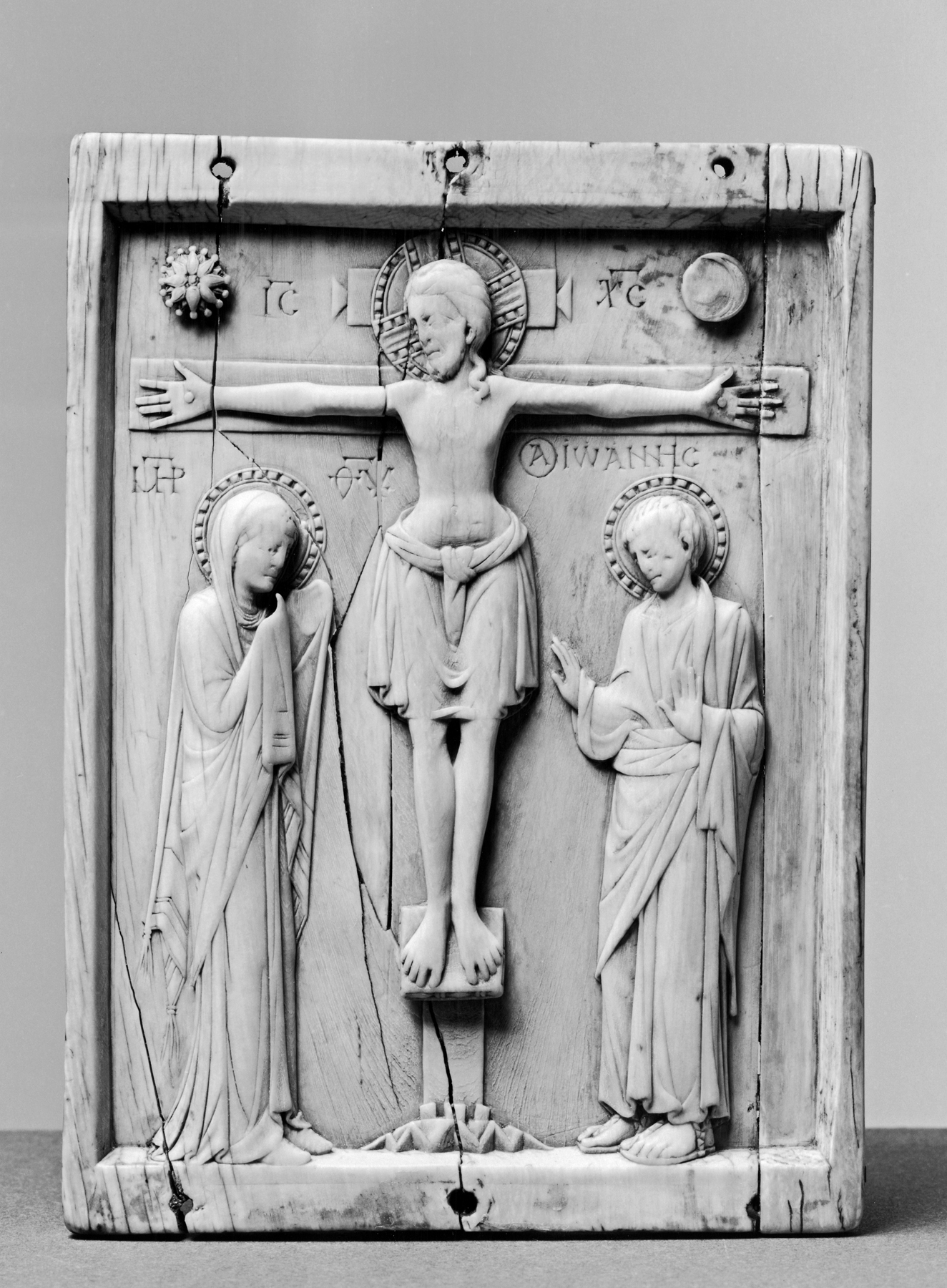Crucifixion
The Crucifixion is one of the most common themes carved on Byzantine ivory triptychs. While Saint John the Evangelist usually carries a Gospel Book, this ivory depicts him with both hands raised in adoration. The Virgin's hands are covered with a fold of her mantle, a gesture of indicating grief. All of the faces have been worn down over time, a clear indication that the ivory was stroked and rubbed during devotional prayers.
Inscription
Provenance
Provenance (from the French provenir, 'to come from/forth') is the chronology of the ownership, custody, or location of a historical object. Learn more about provenance at the Walters.
Octave Homberg, Paris, by purchase; Sale, Hôtel Drouot, Paris, May 16, 1908, no. 463; Jacques Seligmann, Paris, 1908, by purchase; Henry Walters, Baltimore, 1908, by purchase; Walters Art Museum, 1931, by bequest.
Exhibitions
| 1947 | Early Christian and Byzantine Art. Baltimore Museum of Art, Baltimore. |
Conservation
| Date | Description | Narrative |
|---|---|---|
| 3/22/1961 | Treatment | cleaned; coated |
Geographies
Turkey, Istanbul (Constantinople) (Place of Origin)
Measurements
6 11/16 x 4 3/4 x 3/8 in. (17 x 12 x 1 cm)
Credit Line
Acquired by Henry Walters, 1908
Location in Museum
Centre Street: Third Floor: Byzantine, Russian, and Ethiopian Icons
Accession Number
In libraries, galleries, museums, and archives, an accession number is a unique identifier assigned to each object in the collection.
In libraries, galleries, museums, and archives, an accession number is a unique identifier assigned to each object in the collection.
71.244


